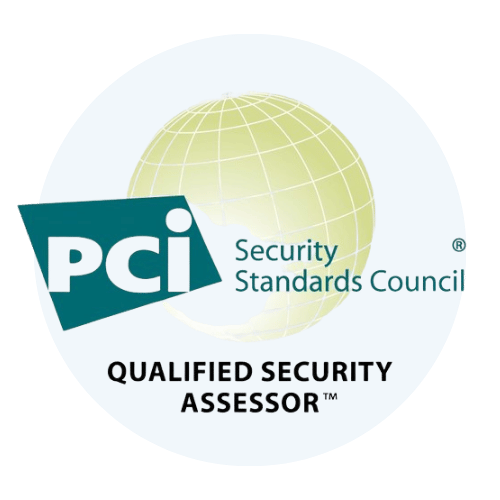Understanding Cyber Threat Intelligence (CTI)

Cyber Threat Intelligence (CTI) is a critical component of modern cybersecurity practices. At its core, CTI transforms raw data into actionable insights, enabling organizations to better understand their adversaries and the threats they pose. By learning who these attackers are, their motives, and the tactics they employ, businesses can build stronger defenses, respond more effectively to incidents, and maintain resilience. This article explores the vital role of CTI, breaking down its fundamental concepts, sources, and benefits to showcase how it empowers organizations to protect their infrastructure and data. Core Concepts Understanding the core elements of CTI is key to creating a robust defense strategy. Below, we break down some key topics: Threat Actors Threat actors are the individuals or groups behind cyberattacks. Knowing who they are can help you better understand their motivations and tactics. Nation-states: These actors often carry out sophisticated attacks with geopolitical goals, like espionage or infrastructure disruption. Cybercriminals: Motivated by financial gain, they target data, money, or valuable assets to profit from ransomware, fraud, or theft. Hacktivists: Driven by ideology, hacktivists aim to promote a cause or disrupt organizations they oppose. Each type of actor has unique capabilities, from using simple malware to deploying advanced tools that bypass detection. Threat Intelligence Sources Good threat intelligence starts with reliable information. Sources include: Open-source intelligence (OSINT): Publicly available data from websites, forums, or social media. Commercial intelligence feeds: Subscription-based services providing curated, up-to-date threat data. Internal threat intelligence: Insights from your own network, such as logs, incident reports, or historical attack data. Intelligence sharing platforms: Collaborative networks where organizations exchange information about threats to strengthen defenses collectively. A mix of these sources ensures a more complete picture of the threat landscape. Threat Intelligence Analysis Turning raw data into actionable intelligence requires precise methods. These include: Threat modeling: Identifying potential attackers and their most likely methods of attack. Vulnerability assessments: Highlighting areas in your systems that could be exploited. Indicators of Compromise (IOCs): Detectable traces of malicious activity, such as unusual IP addresses or file hashes. Threat hunting: Actively searching through systems for signs of threats that may have evaded automated detection. Effective analysis helps predict attacks and fortify defenses before it’s too late. Threat Intelligence Delivery Delivering intelligence the right way ensures it’s usable. Common formats include: Threat feeds: Continuous updates of new threats, often integrated into tools like firewalls or SIEMs. Dashboards: Visual representations of threat data, helping teams quickly grasp key trends and risks. Reports: Detailed analyses tailored for decision-makers, often including recommendations. Alerts: Real-time warnings about active or imminent threats, enabling swift action. Clear, actionable delivery ensures everyone can make informed decisions. With these core concepts, you’re better equipped to engage with CTI, whether you’re defending against attacks or shaping your organization’s cybersecurity strategy. Learn more about our cybersecurity and compliance services. Contact our experts today Examples Here, we’ll review some commonly used acronyms, technical terms, and concepts related to the CTI cycle. Acronyms and Abbreviations CTI contains acronyms that can feel like a foreign language if you’re new to the field. Here are some key terms to know: APT (Advanced Persistent Threat): A highly sophisticated and targeted cyberattack, often carried out by nation-states or well-funded groups. IOC (Indicator of Compromise): Data artifacts like file hashes, IP addresses, or URLs that can signal potential malicious activity. TTP (Tactics, Techniques, and Procedures): The methods attackers use to achieve their objectives, often revealing their level of skill. CVE (Common Vulnerabilities and Exposures): A standardized identifier for publicly known software security issues. OC (Security Operations Center): A centralized team responsible for monitoring, detecting, and responding to cyber threats. MITRE ATT&CK®: A framework for understanding the specific actions threat actors take during an attack, organized by tactics and techniques. These terms are the foundation for much of the communication and strategy in CTI. Technical Terms To effectively discuss threats and defenses, you’ll need to understand these technical concepts related to malware, vulnerabilities, and protocols: Ransomware: Malicious software that encrypts a victim’s data and demands payment to restore access. Phishing: A technique attackers use to trick individuals into revealing sensitive information, often through fake emails or websites. Zero-Day Exploit: A vulnerability that is unknown to the software vendor and actively being exploited without a patch available. Payload: The component of malware that executes malicious activity, like stealing data or delivering ransomware. DDoS (Distributed Denial of Service): An attack where multiple systems overwhelm a target’s network, causing a service disruption. SSL/TLS (Secure Sockets Layer/Transport Layer Security): Cryptographic protocols designed to secure communication over a network. Familiarity with these terms helps when interpreting threat reports or discussing risk with technical teams. Intelligence Cycle-Related Terms The intelligence cycle is the backbone of CTI, encompassing how data is collected, processed, and acted on. Here are some terms central to this process: Collection: Gathering raw data from sources like OSINT, internal logs, or intelligence feeds. Processing: Sorting and organizing collected data to prepare it for analysis. Analysis: Interpreting data to identify threats, patterns, and actionable insights. Dissemination: Sharing the intelligence with the right people or systems, such as through reports or alerts. Feedback: Input from recipients to refine and improve the intelligence process. Fusion: Integrating multiple data sources to create a fuller picture of the threat landscape. Mastering these terms will help you understand how intelligence operations flow from start to finish. Resources Standards and Frameworks To effectively navigate the CTI, it’s crucial to be familiar with key standards and frameworks. Here are some essential resources: NIST Cybersecurity Framework: A comprehensive guide to managing cybersecurity risks, helping organizations improve their security posture. MITRE ATT&CK: A globally accessible knowledge base of adversary tactics and techniques based on real-world observations. STIX/TAXII: Standards for sharing threat intelligence, facilitating automated exchange of cyber threat information. FIRST CTI SIG Curriculum: Offers a detailed overview of standards supporting effective digital forensics and incident response operations. These resources provide a solid foundation for understanding and implementing effective CTI strategies, ensuring your organization is well-equipped to handle cyber threats. Take the
Digital Forensics & Incident Response Explained

Digital Forensics and Incident Response (DFIR) is a crucial area in cybersecurity. It involves detecting, investigating, and responding to cyber threats. DFIR allows organizations to uncover digital evidence, protect sensitive data, and recover from security breaches. It’s critical for ensuring operational resilience and meeting legal or regulatory requirements. This guide is here to cut through the noise. We break down the essential terms, tools, and strategies you’ll encounter in DFIR. Whether it’s data collection, threat analysis, or recovery tactics, the goal is to empower you to understand and use this knowledge with confidence. Cyber threats won’t wait, and neither should your preparation. Core Concepts — Digital Forensics Digital forensics is about investigating and preserving evidence from digital sources. It’s a meticulous process meant to uncover and document what happened during a cybersecurity incident. Here’s how it breaks down: Data Acquisition Capturing evidence is the first step in any forensic investigation. Different methods are used depending on the situation: Live acquisition captures data from a running system, which is ideal for volatile memory or active sessions. Static acquisition involves collecting data from storage devices like hard drives or USBs without altering their contents. Memory dumps extract information from the system’s RAM, often revealing sensitive or time-sensitive details. Maintaining a chain of custody is crucial here. Every step must be documented to ensure the data’s integrity and acceptability in legal cases. Data Analysis Now comes the heavy lifting — understanding the evidence. File system analysis helps uncover deleted or hidden files. Network traffic analysis tracks communication patterns to detect unauthorized activity. Malware analysis dissects harmful software to determine its source, purpose, and impact. Specialized forensic tools streamline these complex tasks, making it easier to connect the dots. Data Presentation The findings must be clear, actionable, and understandable. This typically includes: Forensic reports that provide detailed documentation of what occurred. Timelines that piece together events in chronological order. Visualizations to simplify complex data and communicate key insights effectively. — Incident Response Where digital forensics focuses on investigation, incident response is about quick action to manage and mitigate threats. It ensures breaches are contained before they spiral out of control. Incident Detection The first line of defense involves spotting unusual activity: Intrusion Detection Systems (IDS) monitor for malicious traffic or unauthorized access. Security Information and Event Management (SIEM) tools analyze logs and alerts across systems. Threat intelligence also plays a critical role in identifying emerging risks and vulnerabilities. Incident Containment Once detected, the next step is to minimize the damage: Isolation of infected systems prevents further spread. Network segmentation limits the attacker’s ability to move laterally. Incident Eradication Now it’s time to remove the threat: Get rid of malicious code through malware removal. Restore affected systems to their original state. Incident Recovery The final stage focuses on rebuilding and returning to normal operations: Data recovery retrieves lost or stolen information. System recovery ensures functionality is restored. Business continuity planning reduces downtime and ensures critical services remain available. — Key Principles Strong DFIR processes are guided by essential security principles: CIA Triad ensures the confidentiality, integrity, and availability of data. Least privilege restricts access to only what’s necessary, reducing the risk of internal or external breaches. Defense-in-depth layers of security measures so that even if one fails, others remain in place to protect critical assets. These concepts form the backbone of DFIR strategies, driving effective detection, response, and prevention in an increasingly dangerous digital landscape. Learn more about our cybersecurity and compliance services. Contact our experts today Examples It is crucial to understand the shorthanded terms, legal framework, and emerging tools when working with DFIR. To help simplify the area, consider the following examples: — Acronyms and Abbreviations DFIR professionals often use specialized terms to communicate effectively in high-pressure situations. Here are some you’ll come across frequently: IoC (Indicator of Compromise): Data points that signal a potential security breach, such as unusual network activity or malicious files. TTP (Tactics, Techniques, and Procedures): Strategies used by threat actors to execute their attacks. RAM (Random Access Memory): Essential for live data acquisitions during investigations. EDR (Endpoint Detection and Response): A tool for monitoring and responding to threats on endpoint devices like laptops or servers. Knowing these abbreviations allows for quicker collaboration and better understanding across teams. Legal and Regulatory Terms DFIR often intersects with legal frameworks, making it critical to understand regulations and terminology: Chain of Custody: A process that ensures the integrity of evidence by documenting its handling from collection to presentation in court. GDPR (General Data Protection Regulation): European Union law that imposes strict rules on data privacy and security, with significant implications for incident response. HIPAA (Health Insurance Portability and Accountability Act): U.S. regulation that mandates the protection of healthcare data, often involved in forensic cases. Understanding these terms helps align DFIR practices with legal obligations and best practices. Emerging Technologies and Their Impact Technology evolves quickly, and staying updated on the latest tools is crucial in DFIR. Artificial Intelligence (AI): Used in anomaly detection, predictive analysis, and automating forensic investigations. AI doesn’t replace analysts but enhances efficiency. Blockchain Technology: Offers a secure, tamper-proof method of logging forensic data, ensuring it’s immutable. Cloud Forensics: With more data stored in the cloud, investigating breaches now involves virtual environments, requiring new tools and expertise. Quantum Computing: Still emerging but with the potential to both complicate encryption-based defenses and introduce advanced data recovery methods. These advancements reshape how professionals handle threats, making DFIR an ever-evolving discipline. Staying informed helps ensure readiness for whatever challenges come next. Resources Staying aligned with trusted cybersecurity frameworks ensures a methodical and professional approach to DFIR. Here are some key references you can start with: NIST (National Institute of Standards and Technology): The NIST Cybersecurity Framework is a comprehensive guide to improving incident response and risk management strategies. TrustNet offers tailored insights into making NIST work for your organization. Dive into NIST resources. ISO 27001: This globally accepted standard helps organizations structure their information security management systems. For a
Cybersecurity Use Cases for AI and Machine Learning

In 2024, machine learning (ML) and artificial intelligence (AI) achieved significant advances that altered how several industries see productivity and problem-solving. According to experts, this velocity will only increase in 2025, opening up new possibilities but also posing new difficulties. Boosted Efficiency: AI takes over routine tasks, enabling teams to save time and focus on the bigger picture. Stronger Cybersecurity: ML can detect potential threats earlier, sift through huge data sets, and streamline compliance processes. But progress has a flipside. Cybercriminals are also using AI to create increasingly sophisticated attacks that call for more intelligent defenses. In light of this, it is imperative that companies continue to take proactive measures to protect their systems. We spoke with industry leaders about how they’re navigating this AI-driven landscape. They shared how AI is transforming threat detection, compliance, and network security — offering both innovation and new risks businesses must tackle head-on. Insights from Industry Leaders: How AI is Transforming Cybersecurity — AI Enhances Threat Detection and Compliance “We already use AI to assist us with threat detection and data analytics. Most cybersecurity use of AI is to increase the scope and speed of threat detection, provided that you have enough computing power to make AI threat detection useful. In addition, I know that many companies are training LLMs to assist them with compliance and to guide each employee into regulatory compliance in every process. AI is leading us to have much more secure networks; however, the other side has its own AI, and it will be interesting to see the new threats that it poses as creative and malicious minds get to work.” Bill Mann, Privacy Expert at Cyber Insider, Cyber Insider — AI Identifies Unusual Network Patterns “I use AI to identify unusual patterns in network traffic, which helps detect potential threats early. By training machine-learning models on typical traffic behavior, we can easily spot spikes or anomalies that might indicate an attack, like a Distributed Denial of Service (DDoS) attempt. This allows us to quickly respond to security threats before they escalate. The ability to continuously monitor and analyze network traffic helps maintain a robust defense against evolving cybersecurity risks.” Rodger Desai, CEO, Prove — AI Secures Cybersecurity for Learning Platforms “I work on creating digital strategies that employ AI-based tools to improve cybersecurity for our learning platforms. In this role, we primarily employ AI in threat detection, data analytics, and compliance automation because it helps deliver data integrity and safeguard information for our users. Threat detection is an AI solution that proactively allows us to monitor network traffic patterns. It provides early defense against anomalies that may indicate potential cyber threats. Then, we can address these vulnerabilities before they can impact the user experience. Our data analytics tools, powered by AI, allow us to immediately analyze vast amounts of data to spot trends that inform our security protocols. By following this data-driven approach, we can refine our strategies for maximum protection. We consider regulatory compliance very important, especially for sensitive data. AI lets us automate compliance processes by identifying activities that are not compliant and making the necessary adjustments to align with rapidly changing security standards. This helps us adapt in real-time while providing a secure, reliable platform for our clients.” Arzoo Chaudhary, Content Partnership Manager, ProProfs Training Maker [/et_pb_text][et_pb_text _builder_version=”4.27.2″ _module_preset=”default” text_font=”Hero New Regular||||||||” text_line_height=”1.8em” custom_margin=”20px||20px||true|false” custom_padding=”20px|20px|20px|20px|true|true” border_width_all=”2px” border_color_all=”gcid-c6a045ad-93f2-41aa-bea3-317846c80b16″ locked=”off” global_colors_info=”{%22gcid-c6a045ad-93f2-41aa-bea3-317846c80b16%22:%91%22border_color_all%22%93}”] Learn more about our cybersecurity and compliance services. Contact our experts today [/et_pb_text][et_pb_text quote_border_weight=”3px” quote_border_color=”gcid-c6a045ad-93f2-41aa-bea3-317846c80b16″ _builder_version=”4.27.2″ _module_preset=”default” text_font=”Hero New Regular|300|||||||” text_text_color=”gcid-f90447ab-4baa-4389-a89e-9e109c0034c2″ text_font_size=”16px” text_line_height=”1.9em” ul_line_height=”1.6em” quote_font_size=”18px” quote_line_height=”2em” header_font=”Hero New Regular|700|||||||” header_2_line_height=”1.4em” header_4_line_height=”1.6em” custom_margin=”2em||||false|false” locked=”off” global_colors_info=”{%22gcid-f90447ab-4baa-4389-a89e-9e109c0034c2%22:%91%22text_text_color%22%93,%22gcid-c6a045ad-93f2-41aa-bea3-317846c80b16%22:%91%22quote_border_color%22%93}”] Vigilance in Cybersecurity: Building Resilience with AI The leaders we spoke to highlighted how reliance on AI reshapes threat detection, compliance, and overall security management. What Cyber Vigilance Looks Like Proactive Threat Detection: Businesses leverage AI for real-time monitoring and immediate threat detection. Machine learning identifies unusual patterns in network traffic, flagging potential risks before they escalate. Compliance Automation: AI simplifies regulatory compliance by automating processes, spotting irregular activities, and ensuring adherence to evolving frameworks. Strategic Defense: Enhanced security measures require integrating AI into daily operations, enabling companies to remain agile as threats become more sophisticated. How TrustNet Becomes Your Cybersecurity Partner TrustNet offers comprehensive support to help businesses anticipate, address, and overcome these challenges. Through our tailored services, we fortify your resilience while simplifying complexities. Comprehensive Cybersecurity Services: TrustNet delivers a suite of services designed to tackle critical vulnerabilities, equipping businesses to handle even the most sophisticated threats. These services include: Penetration Testing: Penetration testing to simulate real-world attacks and reinforce weaknesses. Cyber Risk Assessment: Conducting a comprehensive review of your security framework with practical recommendations to address vulnerabilities. Vendor Risk Management: Verifying that your third-party partners comply with top-tier security protocols to safeguard your network. Security Awareness Programs: Educating teams on best practices to mitigate human errors – one of the leading factors behind breaches. Compliance Expertise Across Industries: SOC PCI DSS GDPR CCPA HIPAA ISO 27001 CMMC And more TrustNet offers specialized support to ease the complexities behind these standards and frameworks, enabling businesses to optimize their processes and avoid legal penalties. Enhance Your Strategy with TrustNet’s Flagship Solutions — GhostWatch: Providing unmatched infrastructure oversight, threat management, and compliance alignment to stay ahead of risks. — iTrust: Delivering actionable intelligence for vendor compliance and 360° risk assessments — all in one platform. Staying vigilant starts with the right tools, strategies, and partnerships. TrustNet empowers businesses to thrive by continuously adapting. From automation to proactive defense, we ensure your systems are protected, your compliance is seamless, and your business is prepared for tomorrow’s threats. The Human Element in Cybersecurity Effective cybersecurity isn’t just about technology; it’s about the coordination between tools and those who use them. Humans give context, precision, and decisive action, even while sophisticated technology like AI and machine learning can process vast volumes of data and identify patterns. Here’s why the human touch matters: Critical Thinking: Automated tools are powerful but cannot exercise judgment or intuition. Contextual Awareness:
Vulnerability Management: Identify & Mitigate Cyber Risks
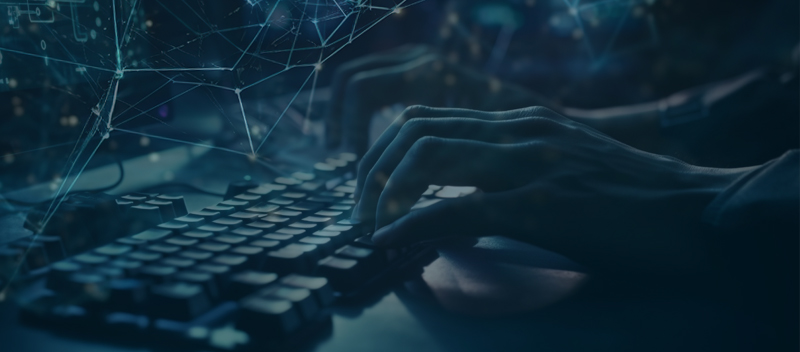
In cybersecurity, vulnerability management is an essential procedure that focuses on finding, evaluating, and fixing flaws in your systems. If these vulnerabilities are not addressed, bad actors may leverage them to compromise critical data and disrupt operations. As a proactive security measure for IT assets, vulnerability management prioritizes and reduces threats. What role does it play in cybersecurity? Continuous monitoring – It detects new threats as they emerge. Risk reduction – It minimizes the chances of exploitation by addressing weak points early. Compliance support – Helps organizations meet industry security standards. A strong vulnerability management process is about staying ahead of attackers. It protects your organization’s data, reputation, and operational stability. With cyber threats evolving rapidly, this proactive approach is a vital component in building a resilient and trustworthy cybersecurity framework. What is Vulnerability Management? So, how does the vulnerability management process work exactly? Vulnerability management isn’t a one-time task — it’s continuous. Here’s how it unfolds step by step: Identification – Detecting vulnerabilities starts with scanning systems and networks. These tools help uncover misconfigured systems, outdated software, and other weak points. Assessment – Factors like exploitability, threat level, and the potential impact on business operations are considered here. For instance, a flaw in a critical server that could expose customer data would rank higher than one affecting a non-essential system. Prioritization – This step ranks vulnerabilities by severity so teams can address the most critical issues first. For example, vulnerabilities with a known exploit in the wild would take precedence over low-risk weaknesses. Remediation – Once prioritized, mitigation strategies are implemented. These may include applying software patches, reconfiguring settings, or disabling unnecessary services. For example, a patch might fix a zero-day vulnerability, while a secure configuration could prevent unauthorized access to an application. Monitoring and validation – After remediation, follow-up scans ensure the vulnerabilities have been resolved. This step also involves monitoring systems for new issues. Continuous use of scanning tools keeps the organization aware of emerging threats and their security posture. Learn more about our cybersecurity and compliance services. Contact our experts today Key Benefits of Effective Vulnerability Management The key benefits of effective vulnerability management include: 1) Risk Mitigation An effective vulnerability management program minimizes your organization’s attack surface. Patching critical software flaws, for instance, safeguards private information and keeps company operations from being disrupted. As hackers have fewer options when the attack surface is smaller, your IT environment remains in check. 2) Compliance and Regulatory Requirements Many compliance guidelines, such as GDPR, HIPAA, or ISO 27001, mandate organizations to actively manage and address vulnerabilities. Proactively resolving these gaps helps you avoid penalties, build trust with stakeholders, and demonstrate a commitment to data protection practices. 3) Enhanced Security Posture Through ongoing monitoring and enhancement, vulnerability management fortifies your whole security architecture. You create a more robust infrastructure by methodically managing risks and adjusting to new threats. In the long run, this proactive strategy not only protects your assets but also gives partners, customers, and staff trust in your capacity to manage cybersecurity issues. Ultimately, vulnerability management transforms a reactive approach into a proactive strategy, safeguarding systems while helping businesses stay resilient in a complex threat landscape. Implementation Strategies Effectively implementing a vulnerability management program requires planning and alignment with broader cybersecurity goals. Here’s how to set up a successful system that works for your organization. Best Practices for Deployment Establish clear goals – Define what success looks like for your program, such as reducing critical vulnerabilities by a specific percentage or meeting compliance standards. Use the right tools—Choose scanning and assessment tools suited to your infrastructure. Choose tools tailored to large enterprises or smaller setups. Automate where possible – Reduce manual effort by automating routine tasks like vulnerability scans and patch deployments. Educate your team – Train staff to recognize vulnerabilities and follow secure practices, ensuring the program runs efficiently. Steps to Build a Successful Vulnerability Management Program Conduct a baseline assessment – Start by scanning your systems to map existing vulnerabilities. This provides a starting point for improvements. Create an asset inventory – Identify and categorize systems, software, and devices to prioritize protection based on criticality. Develop a response plan – Outline what actions to take for vulnerabilities of different severity levels, ensuring rapid and effective remediation. Monitor continuously – Treat vulnerability management as an ongoing process rather than a one-time project, adapting as new threats and technologies arise. Integration with Other Security Measures Vulnerability management cannot work in isolation. Aligning it with broader security strategies strengthens its effectiveness. For example: Incident response – Prioritize vulnerabilities that could be exploited in active attacks. Threat intelligence – Use global threat data to understand which vulnerabilities are most likely to be targeted. Patch management – Ensure integration with existing systems to streamline updates and reduce delays. By embedding vulnerability management into your cybersecurity framework, you create a cohesive defense system that works seamlessly to protect your organization from risks while maintaining operational integrity. Challenges in Vulnerability Management Addressing these obstacles ensures a successful and effective vulnerability management program. Common Obstacles – Resource limitations Many organizations, especially smaller ones, face budget and staffing constraints. Without sufficient tools, skilled personnel, or time, it can be difficult to maintain a proactive vulnerability management system. – Prioritization issues Not all vulnerabilities pose the same level of risk, but deciding which ones to focus on can be overwhelming. For example, teams often struggle when faced with thousands of flagged vulnerabilities, each with varying severity levels. Improper prioritization can lead to delays in addressing critical threats. – Evolving threats The field of cybersecurity is constantly evolving, with new attack techniques and vulnerabilities appearing nearly every day. For IT teams currently handling daily operations, staying ahead of these risks requires constant vigilance, which may be a difficult task. Addressing Challenges Organizations can adopt strategies to confront these hurdles and strengthen their vulnerability management efforts: – Invest in scalable tools Use vulnerability management solutions that fit your budget and can grow with your organization.
Understanding Deception Technology in Cybersecurity

Deception technology is redefining how we think about cybersecurity. Instead of just fortifying systems with stronger defenses, it takes a proactive approach by engaging directly with attackers. Through decoys, honeypots, and other fake digital assets, it creates a false landscape that traps, observes, and analyzes malicious intent. Why is Deception Technology awareness significant? Early detection – It spots threats before they cause damage. Valuable insights – It tracks hacker behavior to strengthen defenses. Reduced impact – Potential breaches are neutralized in controlled environments. Unlike traditional security tools that simply focus on blocking or monitoring, deception technology misleads attackers, turning their actions into useful intelligence. This strategy empowers businesses and cybersecurity teams, allowing them to stay one step ahead of evolving threats. Key Components Deception technology components are designed to mimic genuine systems and data, tricking intruders into revealing their intentions or being led astray. Below are the key elements that make up this sophisticated strategy: Types of Deceptive Assets Honeypots – These are decoy systems that appear as legitimate targets, enticing attackers to interact with them. Any engagement with a honeypot signals suspicious activity, helping security teams spot threats early. Decoy Servers – Fully functional replicas of a real server designed to trap intruders. They attract and isolate attackers, providing a controlled environment for analysis. Fake Credentials – Deliberately planted fake usernames and passwords lure attackers into revealing their presence when attempting unauthorized access. Breadcrumbs – Subtle yet deliberate network artifacts, such as fake file paths or registry entries, that guide attackers toward decoys instead of real assets. Technological Underpinnings The effectiveness of deception technology is magnified through advanced tools like Artificial Intelligence (AI) and Machine Learning (ML). These technologies help to: Build smarter decoys – AI generates realistic assets that closely resemble legitimate systems. Detect patterns – ML algorithms analyze interactions with decoys, identifying new tactics or unusual behaviors used by attackers. Automate responses – Once an intrusion is detected, AI can trigger alerts, isolate threats, or deploy countermeasures instantly. Overall, this dynamic approach not only bolsters system security but also provides invaluable data to anticipate and prepare for future threats. Learn more about our cybersecurity and compliance services. Contact our experts today Benefits of Deception Technology From traditional defensive strategies to a more dynamic and proactive approach, using deception technologies in cybersecurity is a welcome change. Its distinctive features give businesses many significant benefits that help them remain ahead of competitors. Early Threat Detection With deception technology, threats are identified before they can cause damage. By placing believable decoy systems, fake credentials, and other traps within a network, organizations create opportunities to lure attackers. The moment these assets are accessed, an alert is triggered. This enables security teams to isolate the threat and take quick action. By preventing attacks from getting worse, early detection safeguards operations and data. Reduced False Positives Traditional security tools often flag legitimate activity as a threat, leading to frustration and wasted time. Deception technology minimizes this issue. How? Suspicious interactions with decoys are clear signs of malicious intent. Unlike traditional systems, there’s rarely any ambiguity. This precise filtering reduces false positives, ensuring security teams focus on real threats. Enhanced Threat Intelligence Every attacker interaction with a decoy generates valuable data. Hackers unknowingly reveal their methods, tools, and intentions when engaging with these deceptive assets. This information equips security teams to: Recognize emerging attack strategies. Boost defenses in response to evolving threats. Use customized countermeasures to get ready for potential scenarios. Organizations may learn practical information about what attackers target and how they operate by examining these interactions. When deception technology is integrated into a security framework, it does more than just add a layer of defense. It equips businesses with the knowledge and tools to build a resilient and intelligent cybersecurity strategy. Implementation Strategies Effectively deploying deception technology requires thoughtful planning and a commitment to ongoing management. Following best practices ensures a seamless integration into existing security frameworks and maximizes its potential. Here’s how to get started. Best Practices for Deployment Integrating deception technology into your security setup is not a one-size-fits-all process. Consider these guidelines for successful implementation: Strategic Placement of Decoys – Position decoys where attackers are most likely to target, such as unused IP addresses or sensitive system zones. This increases the chances of engagement while keeping real assets safe. Align with Security Goals – Customize deception strategies to match the organization’s unique risks and objectives. A targeted approach ensures that resources are effectively utilized. Layered Security – Use deception alongside traditional defenses like firewalls, intrusion detection systems, and endpoint protection. This multi-layered approach boosts overall effectiveness. Adaptability – Continuously evolve the deceptive environment to keep pace with new attack methods. Static setups risk becoming predictable and ineffective over time. Real-time Monitoring and Response The success of deception technology heavily relies on active observation and swift reactions. Passive setups won’t extract the full value of this approach. To leverage its benefits, organizations should focus on the following actions: Continuous Monitoring – Monitor interactions with deceptive assets in real-time to track attacker movements and gather intelligence. Each interaction is an opportunity to understand tactics and motives. Analysis of Activity – Regularly analyze the behavior of intruders engaging with decoys. This data helps refine security protocols and prepare for future threats. Automated Threat Response – Use AI-driven tools to automate actions like isolating compromised systems, sending alerts, or neutralizing attackers. Immediate responses can prevent further intrusion attempts. By deploying deception technology strategically and maintaining real-time monitoring and analysis, organizations create an environment that actively works against attackers. Use Cases Below are some critical use cases where deception technology makes a significant impact. Perimeter Defense Deception technology strengthens the outer edge of networks by confusing attackers during their reconnaissance efforts. Key examples include: Decoy Servers: Fake systems designed to appear valuable, luring attackers to waste time interacting with non-critical assets. DNS Traps: False DNS entries that trick attackers into revealing their activities early. Immediate Alerts: Any interaction with these decoys triggers
7 Methods Used by Businesses to Identify Cybersecurity Risks
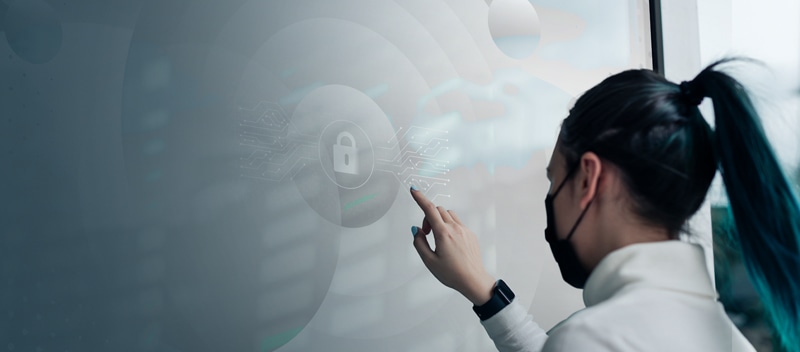
Cybersecurity is not merely an industry buzzword or a marketing ploy; it should be a top priority for all businesses, regardless of size. Since digital dangers are constantly evolving, it’s more crucial than ever to protect sensitive data and adhere to legal requirements. Ignoring these risks might have significant repercussions for your business. But where do you begin? To help, we spoke to seven seasoned business leaders about how they identify and manage cybersecurity risks. Their insights may help you bolster your defenses and stay prepared for the unpredictable challenges of the digital age. Methods Used by Businesses to Identify Cybersecurity Risks 1. Proactive Strategy and Cultural Integration “In my experience leading health IT initiatives at Riveraxe LLC, cybersecurity risk management is about proactive strategy and cultural integration. We prioritize understanding the potential vulnerabilities in healthcare data systems by conducting thorough risk assessments regularly. This helps us identify weak points where data breaches might occur. We implement agile risk-mitigation strategies, often incorporating tools like Model-Driven Design to ensure our tech solutions align seamlessly with organizational needs. For example, when working on an EHR system for a client, we included regular security audits and real-time monitoring to keep sensitive data safe. This proactive approach led to a noticeable decrease in unauthorized access incidents. Investing in consistent staff training is also crucial. Everyone from developers to administrators is trained to recognize threats and respond effectively. A recent case saw us improving the end-user experience by simplifying security protocols, engaging employees, and thus reducing the chance of human error. This holistic focus on both tech and team makes managing cybersecurity risks comprehensive and dynamic.” David Pumphrey, CEO, Riveraxe LLC 2. Combine Encryption and Access Controls “As the CEO of a legal-tech company focused on digital businesses, I’ve seen how cybersecurity risks can impact operations. One effective method we’ve implemented is the combination of encryption and access controls. By encrypting data and using two-factor authentication, we minimize the risk of unauthorized access. At KickSaaS Legal, we apply strong organizational strategies alongside technological solutions. We conduct regular audits to ensure compliance with GDPR and other regulations, which helps us identify vulnerabilities. Employee training is key; everyone is educated on spotting phishing attempts and handling data safely. An example that stands out is when one of our SaaS clients revamped their data security protocols based on our recommendations. They implemented robust password policies and conducted regular security training sessions, which led to a 30% reduction in phishing-vulnerability incidents. For any executive looking to manage cybersecurity risks, focus on proactive measures like these and ensure a culture of continuous learning and adaptation in cybersecurity practices.” Christopher Lyle, Owner, KickSaaS Legal 3. Embed Cybersecurity in Department KPIs “I can personally recommend building cybersecurity risk management directly into each department’s KPIs. Don’t leave cybersecurity in the IT department—embed it as a part of everyone’s performance expectations. This makes cybersecurity an organization-wide responsibility, where all teams play a part in identifying and preventing risks associated with their function. For instance, in our finance department, security of data and monitoring for suspicious transactions are the KPIs. We have project-management objectives to ensure the security of client data in every stage of a project. In this way, we are integrating cybersecurity into the process, instead of it being an IT-centric separate challenge. It also helps every department get more intel about threats that are unique to their role and that may not always be apparent.” Alex LaDouceur, Co-Founder, Webineering 4. Understand Critical Assets and Vulnerabilities “I prioritize a clear understanding of our organization’s critical assets and potential vulnerabilities. We continuously evaluate these areas by conducting regular risk assessments and closely monitoring any changes in our digital landscape. The key is to maintain a risk-aware culture where every team member understands their role in protecting data and systems, supported by well-defined policies and ongoing training. I also recommend implementing a layered defense strategy, where multiple controls work together to guard against potential breaches. Collaboration with other departments is essential to ensure that risk management efforts align with our overall business goals. Regular testing of our response plans keeps us prepared for evolving threats, while effective communication of risk insights with leadership and stakeholders reinforces a proactive approach across the organization.” Christian Espinosa, Founder and CEO, Blue Goat Cyber 5. Conduct Comprehensive Risk Assessments “In the rapidly-evolving landscape of technology, identifying, assessing, and managing cybersecurity risks has become paramount for any organization. The first step is to conduct a comprehensive risk assessment. This involves identifying critical assets, understanding potential threats, and evaluating vulnerabilities within the system. Regularly updating this assessment ensures that you are aware of new threats and emerging vulnerabilities. I recommend using automated tools for vulnerability scanning combined with manual assessments to provide a thorough evaluation of your company’s risk landscape. Once risks are identified, the next crucial step is to assess their potential impact and likelihood. Prioritizing these risks allows us to focus on the most critical threats first. Implementing a risk matrix can help in categorizing risks based on their severity and probability, enabling the development of an effective mitigation strategy. Risk assessment should be a dynamic process that evolves with technological advancements and changing threat environments.” Tomasz Borys, Senior VP of Marketing & Sales, Deep Sentinel 6. Integrate Security into Operational Practices “I focus on embedding cybersecurity into the core of our operational practices. Instead of treating security as a separate function, we integrate it into every phase of our workflows — from product development to service delivery. This approach ensures that security considerations are part of every decision, helping us anticipate and reduce potential vulnerabilities early on. I also advocate for scenario-based planning, where we simulate specific threats relevant to our industry. These simulations help us understand how different risks could impact our operations, keeping our response measures practical and rooted in real situations. We use these insights to adjust our risk-management approach as needed, remaining agile in the face of new threats and always ready
Exploring the Innovative Features of iTrust AI Assistant
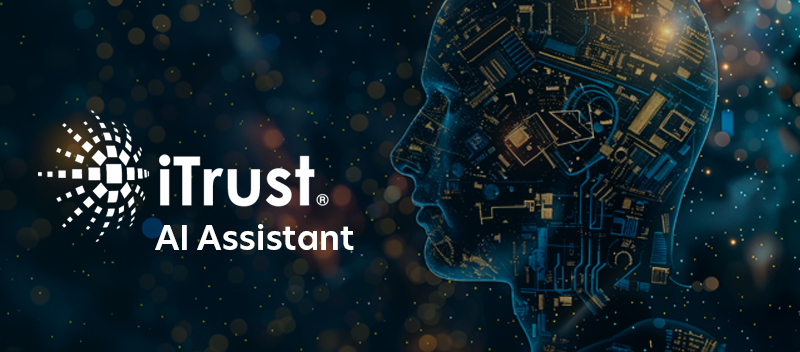
iTrust is at the frontier of assessment and control of cyber threats. Businesses are provided with accurate cyber risk ratings using modern and advanced technology for them to know their security posture. But understanding risks is just the beginning. To bridge the gap between insight and action, iTrust went a step further by creating the iTrust AI Assistant. This advanced tool was designed to simplify complex data, help make dense vulnerability reports digestible, and turn confusing security challenges into clear, actionable steps. We interviewed one of the developers behind iTrust to unpack the story behind the AI Assistant. You’ll learn: What drove its development and the problems it aims to solve. Its standout features include interactive guidance and real-time threat alerts. How it safeguards user data and ensures client trust. What the future holds for this innovative solution. Interview with Developers Interviewer: Today, we’re speaking with Volodymyr Khalaburskiy, a Head of Product at iTrust, TrustNet Inc., and one of the key minds behind the creation of the iTrust AI Assistant. Thanks so much for joining us today, Volodymyr. To kick things off, what was the driving force behind creating the iTrust AI Assistant? Volodymyr Khalaburskiy: It’s great to be here! Honestly, the idea for the iTrust AI Assistant came straight from the challenges we saw our users dealing with. Two big ones stood out. First, there was the issue of vulnerability reports. These reports often run hundreds of pages, and they’re not exactly light reading. Trying to figure out what’s important in that sea of technical language can be overwhelming, even for seasoned professionals. The second problem was translating those technical fixes into plain language. A solution is only as good as how easily it can be understood and implemented. Many of our users weren’t sure how to take the recommended actions because the advice landed like a riddle. We wanted to create something that solved both problems at once. That’s where the AI Assistant came in. It simplifies reports, highlights what’s critical, and explains solutions in a way that just makes sense. And we didn’t stop there; it’s available 24/7, so users always have help on hand. — Interviewer: That sounds like a game-changer. What are some features that really make the iTrust AI Assistant stand out? Volodymyr Khalaburskiy: There are quite a few, actually, and we’re really proud of how versatile it is. I can enumerate the highlights below as: Always Available: The assistant is live 24/7. Cyber risks don’t wait for office hours, so neither does it. Deep Threat Analysis: It identifies vulnerabilities and breaks them down for users, so they know what to tackle first. Interactive Q&A: This is a big one. It’s not just dumping solutions at you — it walks you through them. You can ask follow-up questions and get clear guidance in real-time. Knowledge Base Access: The assistant links directly to the National Vulnerability Database (NVD), so users can tap into a treasure trove of up-to-date cybersecurity insights whenever they need them. Proactive Recommendations: It doesn’t just react to issues; it flags potential vulnerabilities before they escalate, giving users a chance to prevent problems. Simplified Service Requests: Instead of juggling support tickets or emails, users can streamline everything through the assistant. It makes the whole process faster and much less stressful. What’s exciting is how these features come together. It’s more than just another tool; it’s like having a cybersecurity expert you can talk to anytime. — Interviewer: That’s really impressive. But this leads to another crucial topic; data privacy. Cybersecurity is built on trust. How does the AI Assistant make sure sensitive data stays secure? Volodymyr Khalaburskiy: That’s such a critical question, and trust is non-negotiable for us at iTrust. We’re a cybersecurity company, so protecting sensitive information has always been at the heart of what we do. First off, every interaction with the AI Assistant is encrypted using state-of-the-art protocols. Whether it’s a simple query or more detailed system data, it’s locked down to prevent unauthorized access. We also operate within the strict boundaries of global privacy regulations like GDPR. Compliance is a guiding principle for us. All the assistant’s features are designed to keep user data safe and ensure privacy rules are followed to the letter. Lastly, we don’t rest on our laurels. We run routine audits and security checks to find and eliminate vulnerabilities. Cyber threats evolve, and so do we. This commitment means the assistant doesn’t just protect against today’s risks, it’s prepared for tomorrow’s challenges, too. — Interviewer: Love that mindset. Now, shifting gears a little. What’s next for the iTrust AI Assistant? Any exciting developments you can share? Volodymyr Khalaburskiy: To be honest, I believe that we’re only scratching the surface of what this assistant can do. We launched the BETA version in late 2024, and while the feedback has been fantastic, there’s plenty of room for growth. One immediate focus is improving its accuracy. Right now, the assistant is hitting a 94% accuracy rate for most requests, which is solid, but we’ve set a goal to push that to 98% by early 2025. It’s important to us that users feel completely confident in the advice they’re getting. We’re also working on expanding its feature set. One thing in the pipeline is enabling the assistant to analyze penetration test reports, which will allow it to deliver even more precise recommendations. Penetration tests can be incredibly complex, so making that data actionable will provide huge value for our clients. Beyond that, we’re looking to scale its capabilities across industries. Cybersecurity affects everyone, whether you’re in finance, healthcare, or retail. Our goal is to make the assistant an accessible solution for businesses of all shapes and sizes. — Interviewer: It really sounds like the possibilities are endless. With all these innovations, it’s clear the assistant is already making a big impact. Volodymyr Khalaburskiy: Absolutely. Seeing how it helps clients tackle their toughest cybersecurity challenges has been so rewarding. This isn’t just about technology anymore; it’s about making
CMMC and NIST: Aligning Cybersecurity Frameworks for Enhanced Protection
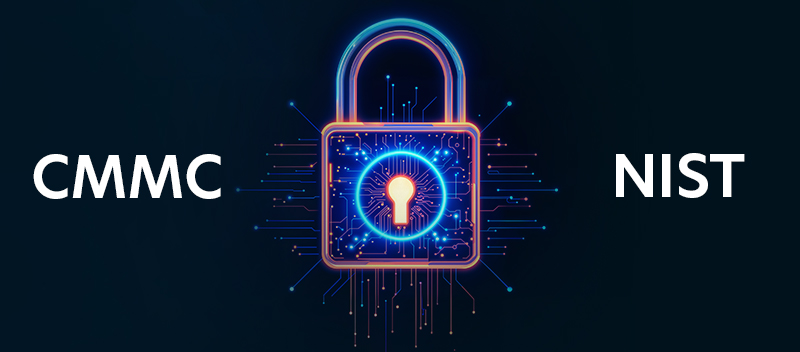
The aerospace and defense sector has faced a dramatic surge of 300% in cyberattacks since 2018. This statistic highlights the urgent need for stronger and more coordinated cybersecurity measures. To tackle these risks, the Department of Defense (DoD) introduced the Cybersecurity Maturity Model Certification (CMMC). Its purpose is to help defense contractors protect sensitive data while ensuring they remain eligible for critical DoD contracts. On the other side of the equation is the National Institute of Standards and Technology (NIST). Known globally for its comprehensive cybersecurity guidelines, NIST has established frameworks like: NIST SP 800-171 – Focused on protecting controlled unclassified information. NIST SP 800-53 – Broader frameworks for cybersecurity controls in information systems. However, complying with both CMMC and NIST can be overwhelming for many organizations. Missteps are common, even costly. Aligning these frameworks goes beyond simplifying compliance. It strengthens your defenses, reduces attack risks, builds client trust, and gives you a sharper competitive edge. These benefits collectively make the extra effort worth it. Understanding CMMC and NIST Frameworks The DoD has updated the CMMC to version 2.0, aiming for a more streamlined and efficient framework. While the goal remains the same —protecting sensitive information across the defense supply chain — CMMC 2.0 introduces significant changes to simplify implementation without sacrificing critical security standards. The updated CMMC 2.0 framework consolidates the previous five certification levels from version 1.02 into three streamlined levels: Level 1 – Foundational Focuses on basic cybersecurity practices drawn from FAR 52.204-21. Suitable for companies handling Federal Contract Information (FCI). Level 2 – Advanced Based on the 110 security requirements outlined in NIST SP 800-171, this level is necessary for contractors working with Controlled Unclassified Information (CUI). Level 3 – Expert Incorporates advanced security practices, aligned with a subset of NIST SP 800-53, to defend against the most sophisticated threats. Assessment Requirements The evaluation process now varies depending on the level of certification required by a contract. Here’s what companies need to know: Level 1 requires self-assessments. Level 2 includes a mix of self-assessments for some programs and third-party assessments for higher-priority contracts. Level 3 mandates formal government-led assessments due to the critical nature of the data involved. Most contracts will require compliance at Level 1 or Level 2. However, understanding the three levels is crucial for ensuring alignment with CMMC requirements, maintaining eligibility for contracts, and staying competitive. Transition Period Defense contractors currently aligned with CMMC 1.0 must start preparing for the transition to CMMC 2.0. This includes revising practices, governance, and documentation to meet the updated requirements. While the timeline for full implementation continues to evolve, companies are encouraged to act swiftly. NIST Cybersecurity Frameworks Overview The NIST CSF is respected worldwide for its guidance on reducing cybersecurity risks. Its major publications include: NIST SP 800-171 Focused on protecting CUI in nonfederal systems and organizations. NIST SP 800-53 Covers a broad range of security and privacy controls that companies can adopt. At the heart of the NIST CSF are six core functions aimed at building strong cybersecurity programs: Identify – Pinpoint risks to systems and sensitive data. Protect – Apply security measures to prevent hazards. Detect – Monitor systems to spot incidents quickly. Respond – Act immediately to contain and resolve threats. Recover – Restore affected systems and resume operations after disruptions. Govern – Develop governance structures and processes to oversee cybersecurity risk management. Bridging CMMC and NIST The CMMC framework builds on the foundation set by NIST SP 800-171, integrating its security requirements while tailoring them to defense contractors. By aligning these frameworks, contractors not only achieve CMMC compliance but also enhance their cybersecurity risk management. Taking it a step further, adopting the in-depth controls found in NIST 800-53 can help contractors meet higher CMMC levels and stay protected against growing cybersecurity threats. For more on our CMMC and NIST compliance services, click here CMMC NIST Aligning CMMC with NIST Frameworks Key Similarities CMMC and NIST CSF share a foundation built on common principles. Both stress the value of risk management and exhort businesses to recognize, evaluate, and reduce risks to their data and systems. Another important element is continuous development; to keep ahead of the constantly changing cybersecurity issues, they want businesses to assess and improve their procedures on a regular basis. Additionally, both frameworks focus on implementing and maintaining effective security controls. From access management to incident response, the frameworks prioritize actionable measures that ensure sensitive information, such as CUI, is always protected. These shared principles make it easier for organizations already familiar with one framework to align with the other. Key Differences While there is overlap, notable differences exist between the two frameworks. 1. Specific Requirements CMMC has specific mandates tailored to the needs of defense contractors, some of which are more strict than those found in NIST SP 800-171. For instance, CMMC 2.0 Level 2 incorporates NIST SP 800-171 but also requires assessments by third parties for higher-priority contracts, which is something that NIST does not mandate. 2. Focus Areas CMMC’s structure is designed to meet the DoD’s unique needs, integrating aspects of NIST 800-53 at its highest level, whereas NIST frameworks are more general and applicable across various industries. These nuances require careful attention and strategic planning. Practical Guidance For defense contractors and other organizations managing CMMC compliance alongside NIST, an integrated approach is key. Here’s a roadmap to help streamline the process: — Understand the Overlaps Start by identifying areas where CMMC and NIST align, such as identity and access management, incident response, and protective controls. This will allow you to build core systems that satisfy both frameworks. — Conduct a Gap Analysis Compare your current cybersecurity practices with the requirements of both CMMC and NIST SP 800-171. Highlight areas where additional effort is needed; this is especially important for meeting CMMC 2.0 Level 2 standards. — Develop an Action Plan Prioritize critical tasks like protecting CUI and ensuring regular monitoring of your systems. Implement security controls incrementally if resources are limited, beginning with high-risk areas.
Cybersecurity Framework Profiles: Tailoring NIST CSF to Your Organization’s Needs
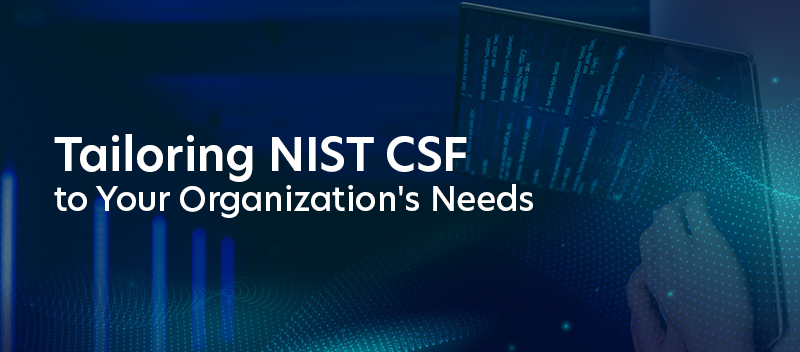
Cybercrime isn’t slowing down. In the last two years alone, the global cost of cybercrime hit a staggering $8 trillion — that’s over $250,000 every second. Projections claim that it can climb to $10.5 trillion this year. If these numbers feel overwhelming, they should. The NIST Cybersecurity Framework (CSF) is a go-to guide for managing cybersecurity risks. It’s comprehensive, flexible, and widely respected. But here’s the catch: it’s not always easy to implement. Many organizations struggle with complexity, wrestle with how to prioritize their steps or find that they don’t quite fit their specific needs. Enter NIST CSF Profiles. These profiles allow you to customize the framework for your unique risks and business goals. The benefits? Strengthened risk management. Simplified compliance. Smarter resource allocation. A more efficient cybersecurity strategy. This guide will show you how tailoring the NIST CSF through profiles can transform your organization’s cybersecurity. What are NIST CSF Profiles? NIST CSF Profiles are customized subsets of the NIST Cybersecurity Framework. They are developed to match the unique requirements of a business, considering variables such as industry, size, sector, and risk tolerance. Consider them as your personalized road maps that direct your cybersecurity efforts. The purpose of these profiles is clear: Simplify implementation by narrowing the focus to the controls that matter most to your organization. Structure risk assessment and prioritization to address the most critical threats first. Improve team communication and collaboration by providing everyone with a shared, clear framework. There are several types of profiles, each suited to different needs: Sector-Specific Profiles: For industries like financial services or healthcare, with unique regulatory and risk landscapes. Size-Based Profiles: Tailored for small businesses, medium enterprises, or large corporations. Risk-Based Profiles: Designed around different levels of risk tolerance — high, moderate, or low. Custom Profiles: Built by individual organizations for their specific goals and requirements. These profiles help align cybersecurity strategies with real-world challenges, ensuring more effective and efficient risk management. To know more about our NIST Penetration Testing services, Click Here How to Select and Implement Appropriate Profiles Selecting and implementing the right NIST CSF profile requires careful planning and thoughtful execution. By breaking the process into manageable steps, organizations can ensure they take a structured approach to enhancing cybersecurity. Step 1: Conduct a Risk Assessment Before anything else, you need to know where you stand. Identify key cyber threats and vulnerabilities. What are the most pressing risks your organization faces? These could include phishing, ransomware, or insider threats. Determine your risk tolerance. Some organizations might be more risk-averse, while others might accept a higher degree of uncertainty based on their operations. Understanding what’s at stake is the foundation for everything else. Step 2: Evaluate Available Profiles With a clear picture of your risks, it’s time to explore the options. Research existing profiles. Are there sector-specific profiles aligned with your industry? Analyze how profiles fit your needs. Whether based on size, risk level, or sector, a good profile should complement your operations and security priorities. Step 3: Personalize the Profile Off-the-shelf profiles are a great starting point, but they’re rarely a perfect fit. Add or remove specific controls. For example, you might need stricter access controls or additional training for staff. Ensure alignment with operations. Fine-tune the profile to include the controls essential for your organizational goals and risk tolerance. Step 4: Determine Gaps Between the Current and Target Profile Create a roadmap by identifying discrepancies between your current practices and the target framework. Conduct a gap analysis. Analyze where your practices diverge from the chosen profile’s standards. Prioritize gaps for remediation. Focus first on the most critical areas, ensuring pressing vulnerabilities are mitigated promptly. Step 5: Implement and Monitor This is where strategy meets action. Develop an implementation plan. Set specific objectives, delegate responsibilities, and determine timelines for deploying each control. Adjust the implementation timeline. Ensure that rollout schedules align with your organization’s resources without overburdening the team. Continuously monitor and adapt. Regularly review your program, measuring the effectiveness of controls and responding to new or emerging threats. Review and update the profile periodically. Reassess your profile to align it with operational changes, emerging risks, and updated industry standards. Remember, a tailored approach ensures your strategy meets your unique challenges head-on. Tailoring the NIST CSF to Your Specific Needs Customizing the NIST Cybersecurity Framework is about making sure it works for your particular business environment. A structure that genuinely works for you may be developed by considering specific factors and focusing on priorities. 1. Consider Organizational Factors Every organization is different, so your approach should reflect your individuality. Industry and sector. Healthcare and financial services face vastly different regulatory requirements and threats. Size and complexity. A small business with a simple IT setup will need a different strategy from a global enterprise with a sprawling infrastructure. Business processes and IT infrastructure. How your teams work, and the technology they rely on should be central to your framework. Risk tolerance and appetite. Are you risk-averse, or can you accept some degree of vulnerability? Resource constraints. Your people, budget, and time are finite. Design within these limits. 2. Focus on Key Priorities You can’t protect everything equally, nor should you try. Identify your critical assets. Which systems and data are essential to operations? Start there. Address significant threats. What cyber risks pose the greatest harm? Prioritize tackling these vulnerabilities. Allocate resources wisely. Invest in the areas where you’ll see the most meaningful improvements in security. 3. Involve Stakeholders A cybersecurity framework without broad support is doomed to fail. Engage key stakeholders, including IT, business units, and senior leadership. Their input ensures the framework aligns with organizational goals. Foster a culture of awareness. Make cybersecurity everyone’s responsibility. When employees understand the risks, they’re more likely to follow best practices. In the end, you need to create a roadmap that’s pragmatic, effective, and built to handle the risks you face. The result? A cybersecurity strategy that not only protects but empowers your business. Optimizing Cybersecurity Frameworks with NIST CSF Profiles A
Compliance Challenges to Anticipate in the Next Few Years
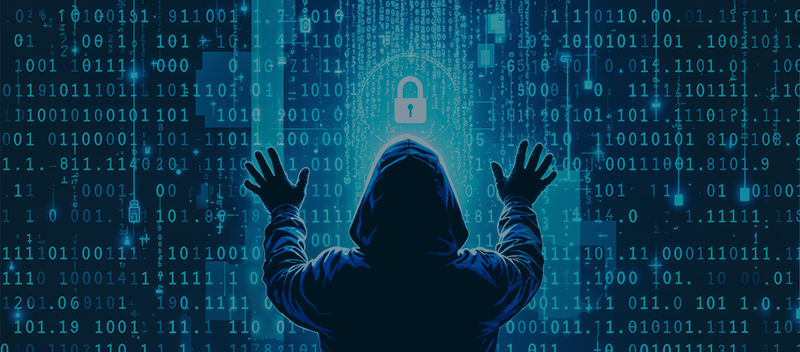
The pace of technological change is staggering. Just look at artificial intelligence — by 2025, it will not only become significantly smarter but also much more accessible. Tools powered by AI are being adopted faster than anyone could have predicted. The impact is undeniable, but with such rapid innovation comes new challenges. Emerging technologies, while powerful, carry risks. They can complicate compliance standards, raise vulnerability to cyber attacks, and present unanticipated vulnerabilities. Therefore, improved security measures and a more flexible approach to regulatory compliance are urgently needed. Simply put, businesses can’t afford to treat compliance as a box-ticking exercise anymore; it’s become a critical part of staying protected and competitive. We surveyed business leaders from several industries to learn more about this changing dynamic and to find out what compliance challenges they anticipate in the near future. Compliance Challenges to Anticipate in the Next Few Years — Proactive Security Efforts Will Be Crucial “Compliance regulations will continue to lean harder into proactive security. Prevention and preparedness will be at the heart of compliance changes in the coming years. Software developers will target small organizations that need to achieve compliance, and an entire market will crop up with these changes as they arrive. Small organizations will be forced to be proactive in their security efforts to protect personal data as access to it grows exponentially.” Bill Mann, Privacy Expert, Cyber Insider — Adapting to EU’s NIS2 and DORA Regulations “Looking ahead, our biggest compliance needs will likely revolve around adapting to the EU’s NIS2 Directive and DORA regulations. These will significantly impact our cybersecurity strategy by requiring more robust incident reporting, enhanced supply-chain security, and stricter operational-resilience testing. To address these challenges, we’ll need to invest in advanced threat-detection tools, strengthen our third-party risk management, and implement more rigorous penetration-testing protocols.” Hodahel Moinzadeh, Founder & Senior Systems Administrator, SecureCPU Managed IT Services — Addressing Privacy Concerns in Health IT “As someone deeply immersed in health IT, our primary compliance focus in the coming years will be on addressing privacy concerns and data governance within healthcare. The rise of digital health solutions brings stricter regulations, like HIPAA, demanding robust encryption technologies and regular audits to safeguard patient data effectively. We integrate systems seamlessly to ensure compliance doesn’t impede healthcare delivery. For instance, a small clinic we worked with outsourced their IT to maintain patient data security, drastically reducing their regulatory infractions and shifting focus to improved patient care. This approach has been pivotal in reinforcing data-protection strategies. Our cybersecurity strategy is driven by anticipating integration challenges and executing rigorous data governance. By ensuring smooth interoperability and standardization, we aim to ward off fragmented-care risks. This proactive stance helps us stay regulatory-compliant and maintain a comprehensive cybersecurity framework that evolves alongside emerging threats.” David Pumphrey, CEO, Riveraxe LLC — Complex Compliance Needs Will Increase “I foresee that compliance requirements will become more complex, particularly with increased regulations around data privacy and security standards. Adapting to these changes will be crucial for maintaining trust and meeting legal obligations, both of which are essential to business operations today. This shift will shape our overall cybersecurity approach, requiring a focus on secure data handling, access controls, and reliable protection methods. Incorporating these compliance needs will help us strengthen our defenses against emerging risks and demonstrate a strong commitment to safeguarding data across all aspects of our business.” Christian Espinosa, Founder and CEO, Blue Goat Cyber — Data Protection and Regulatory Requirements “I anticipate that our biggest compliance needs will revolve around data protection and regulatory requirements, such as the upcoming SEC rules for cyber-incident reporting. These will necessitate more rigorous documentation and faster response times when breaches occur. Given the average cost of a data breach is now $4.45 million, prompt response and robust security will be pivotal. To address these needs, I advise leveraging advanced ERP solutions like NetSuite and IFS Cloud, which offer improved security features such as two-factor authentication. I’ve helped many clients improve their cybersecurity posture by integrating third-party apps that focus on endpoint security and full-disk encryption, crucial for risk mitigation. Our cybersecurity strategy involves continuous risk assessments and scenario planning, similar to what I’ve discussed in my podcast, Beyond ERP, where I highlight the importance of preparedness. Businesses should adopt these practices to ensure that they not only meet regulatory standards but also improve their resilience against evolving cyber threats.” Louis Balla, VP of Sales & Partner, Nuage — Evolving Data Privacy Regulations in Law Enforcement “One of our biggest compliance needs in the next 2–3 years will likely center around evolving data privacy regulations and the need for robust security frameworks to protect sensitive law enforcement data. With growing concerns about handling personally identifiable information (P.I.I.) and the increasing threat of cyber attacks targeting public safety organizations, we anticipate stricter laws surrounding data storage, sharing, and protection. These changes will directly impact our overall cybersecurity strategy. We must invest in advanced encryption technologies, conduct regular audits, and ensure all employees are trained on the latest security protocols. Furthermore, as compliance requirements evolve, we must adopt more proactive risk-management measures, such as implementing more sophisticated intrusion-detection systems and automated-threat-response tools. Working in law enforcement and public safety also means we must stay aligned with local and federal regulations, which will require a dynamic and adaptive approach to compliance. By prioritizing compliance in our cybersecurity strategy, we can ensure we meet the legal requirements and protect the integrity of the data we handle, fostering trust with our clients and the public.” Joshua Schirard, Director, Byrna — Global Data Privacy Regulations Will Intensify “Data privacy regulations across our global operations will be our most pressing compliance challenge in the coming years. With our teams spanning the U.S., Asia, and South Africa and primarily serving U.S. clients, we’re seeing increasingly complex requirements for cross-border data handling and privacy protection. We recently conducted a comprehensive compliance audit that revealed the need for significant changes in our data governance structure. Our analysis showed that



